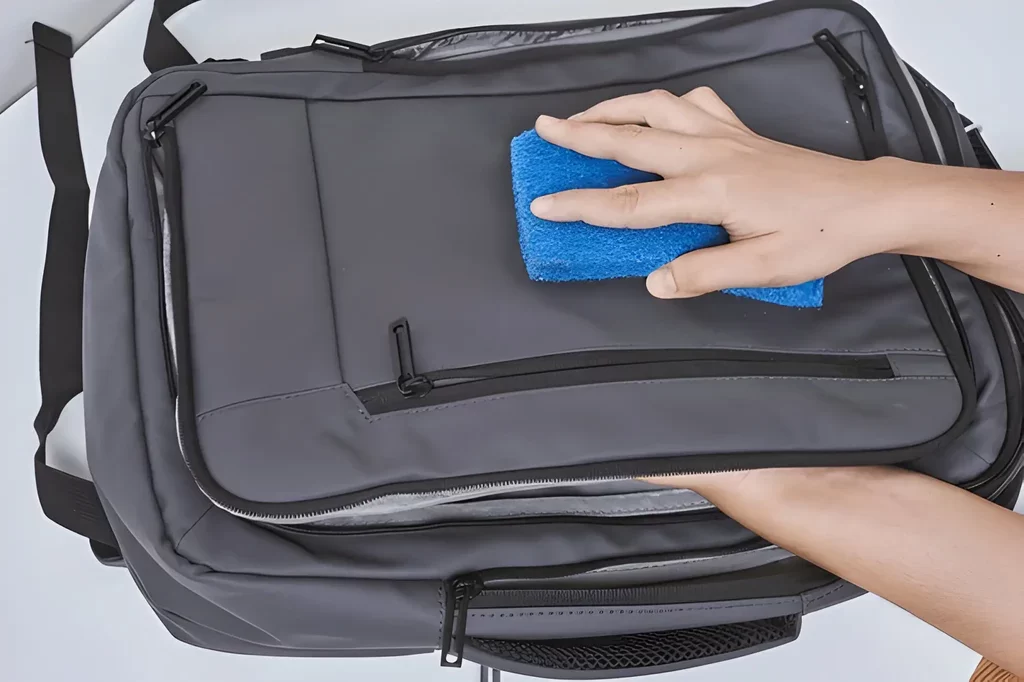How to Clean Fabric Backpacks Effectively: A Step-by-Step Guide
- Why Keeping Backpacks Clean is Important
- Types of Fabric Backpacks and Their Care
- Materials Needed to Clean Your Backpack
- Step-by-Step Guide to Cleaning Fabric Backpacks
- Common Mistakes When Cleaning Backpacks
- How to Maintain Your Backpack After Cleaning
1. Why Keeping Backpacks Clean is Important
Whether you're a student, a traveler, or someone who simply uses a backpack daily, keeping it clean not only helps maintain its appearance but also extends its lifespan. Over time, dirt, sweat, and spills can accumulate on fabric backpacks, leading to unpleasant odors, stains, and even material degradation. Regular cleaning helps keep your backpack fresh, hygienic, and functional.
Moreover, a clean backpack makes a great impression, especially if you carry it to school, work, or while traveling. A well-maintained backpack speaks to your overall attention to detail and personal care, which is why learning how to clean fabric backpacks effectively is a useful skill.
2. Types of Fabric Backpacks and Their Care
Not all fabric backpacks are the same, and their care can vary depending on the material used. Here are a few common types of fabric backpacks and tips for cleaning them:
- Canvas Backpacks: Known for their durability, canvas backpacks are relatively easy to clean and can withstand machine washing, though it’s often best to spot clean them for minor stains.
- Polyester Backpacks: These are lightweight and water-resistant, making them easy to clean with a damp cloth or sponge. Avoid putting them in the washing machine if they have delicate elements like zippers or leather accents.
- Nylon Backpacks: Nylon is water-resistant and stain-resistant, but it can be sensitive to heat. Wash with cold water and air dry to avoid damage to the fabric.
- Blended Fabrics: Backpacks made from a mix of different materials require specific care instructions. Always check the label for cleaning recommendations to ensure proper treatment.
3. Materials Needed to Clean Your Backpack
Before starting the cleaning process, gather the following materials to make sure you're fully equipped:
- Soft brush or lint roller: Useful for removing dirt, dust, and loose debris.
- Cold water: Always clean fabric backpacks with cold water to avoid shrinking or damaging the material.
- Mild detergent: Choose a gentle detergent free of harsh chemicals to protect the fabric's integrity.
- Cleaning cloth or sponge: For spot cleaning stains without soaking the entire bag.
- Dry towel or cloth: Helps to blot excess water and speed up the drying process.
- Washing machine (optional): If the backpack is machine-washable, use it for a deep clean, but ensure all pockets are emptied and the zippers are closed before washing.
4. Step-by-Step Guide to Cleaning Fabric Backpacks
Cleaning your fabric backpack effectively can be broken down into simple steps. Follow these instructions for the best results:
- Empty your backpack: Before cleaning, remove all items, including pockets, straps, and compartments. Check for any loose items like pens or papers that might get damaged in the cleaning process.
- Brush off dirt and debris: Use a soft brush or lint roller to remove dirt, dust, and crumbs from the backpack’s surface. Pay close attention to seams and zippers where debris can accumulate.
- Spot clean stains: For minor stains, apply a small amount of mild detergent to a damp cloth and gently blot the area. Avoid rubbing, as this can spread the stain.
- Hand wash or machine wash: If the backpack is machine washable, place it in a laundry bag and use a gentle cycle with cold water. If hand washing, use a sponge or cloth with cold water and detergent to clean the entire backpack.
- Dry your backpack: Never wring out your fabric backpack, as this can distort its shape. Instead, lay it flat on a towel to blot out excess moisture. Then, air dry it by hanging it upside down in a well-ventilated area. Avoid direct sunlight or heat, which can damage the fabric.
5. Common Mistakes When Cleaning Backpacks
While cleaning your fabric backpack, avoid these common mistakes that can lead to damage:
- Using hot water: Hot water can cause fabric to shrink or fade. Always clean with cold water to preserve the material.
- Overloading the washing machine: If using a washing machine, avoid stuffing your backpack in too tightly. It can cause it to lose its shape.
- Using harsh chemicals: Stay away from bleach or strong cleaning agents, as they can weaken the fabric and cause discoloration.
6. How to Maintain Your Backpack After Cleaning
After cleaning, it's important to maintain your fabric backpack to ensure its longevity:
- Regular cleaning: Clean your backpack every few months or as needed, depending on usage.
- Store it properly: When not in use, store your backpack in a dry, cool place to prevent mildew and odors.
- Re-waterproofing: If your backpack has water-resistant properties, consider using a fabric spray to reapply a waterproof coating after cleaning.
Taking these steps ensures that your backpack remains in great condition, ready for your next adventure or daily commute.















